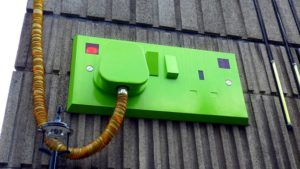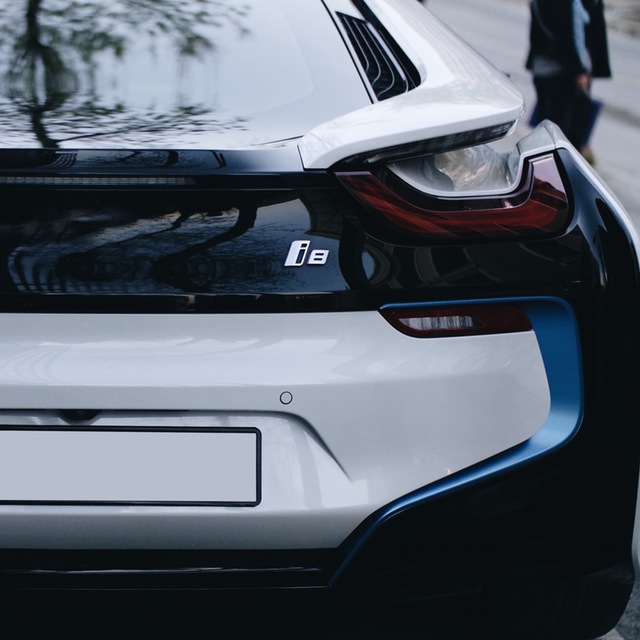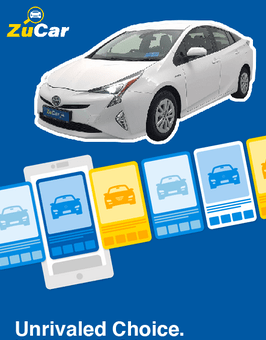The Irish government aims to have 10% of electric cars on our roads by 2020, which is 230,000 electric vehicles on the streets. Is this goal too low?
For those unfamiliar with the different kinds of electric vehicle cars, here is a brief explanation. While many dealerships have yet to catch up with the selling of hybrid/electric vehicles, some dealerships in Ireland already sell EVs.
Battery Electric Vehicles
These cars are powered by a charged battery where they have a wide variety of speeds and rarely require a gearbox. These electric motors are much more efficient than internal combustion engines.
Hybrid Electric Vehicles
Hybrid EVs have a petrol or diesel engine that produces electricity that powers the electric motor of the car. Any extra energy is collected and stored in the battery. A series hybrid car decouples a combustion engine and drives the electricity generator. A parallel hybrid car will run on a combustion engine and an electric motor, meaning the car will run on combustion, electricity or both. A plug-in hybrid electric car on the other hand uses a large battery store as a source of electricity to run the car and when the storage is depleted, petrol or diesel energy is used.

What is interesting in all EVs is that they have a combined braking and charging mechanism. If one is driving in a city, the constant breaking and accelerating is put to good use and recovers kinetic energy from the momentum of breaking. Every time a driver breaks, a portion of that energy is used towards acceleration. Genius!
What are the advantages of EVs?
The obvious reason is that they are much more environmentally friendly  than regular fossil fuel-powered cars. Fuel emissions are reduced by 30-40% and the production of these cars generates less waste, not to mention that materials used are often recycled. A typical example is the BMW i3, where 25% of the weight of the plastic used in the interior is from recycled material/ renewable resources. The seat textiles are made of 100 % recycled fibers. The manufacturing of many EVs also also boast a significant reduction of CO2 emissions. Tail pipes of electric vehicles emit much lower or eve 0% emissions and if one lives in a very heavy-traffic city, the air will be much easier and better to breathe in the future. Waiting in traffic in a busy city will give you peace of mind that you are not polluting the air and also takes up no energy.
than regular fossil fuel-powered cars. Fuel emissions are reduced by 30-40% and the production of these cars generates less waste, not to mention that materials used are often recycled. A typical example is the BMW i3, where 25% of the weight of the plastic used in the interior is from recycled material/ renewable resources. The seat textiles are made of 100 % recycled fibers. The manufacturing of many EVs also also boast a significant reduction of CO2 emissions. Tail pipes of electric vehicles emit much lower or eve 0% emissions and if one lives in a very heavy-traffic city, the air will be much easier and better to breathe in the future. Waiting in traffic in a busy city will give you peace of mind that you are not polluting the air and also takes up no energy.
EVs are smooth, quiet, cheaper, and may save you up to 70% on fuel costs.
What are the disadvantages of EVs?
 Since batteries for EV are more expensive, the car will also cost more. Most customers are concerned with the 60-120 km drive range on a single charge. Charging can take from 3-8 hours. Unfortunately people don’t have time to wait so long for their cars to charge, unless they have a charging station at their home. Also, most charging stations in Ireland at the moment require customers to pay for parking. If in Dublin the cost of parking per hour is €2.90, then parking for a full charge could cost more than fuelling a regular car at a petrol station. For those avid speeders who enjoy the power of a motor, EVs are usually seen as way too slow, with top speeds between 65-100kph.
Since batteries for EV are more expensive, the car will also cost more. Most customers are concerned with the 60-120 km drive range on a single charge. Charging can take from 3-8 hours. Unfortunately people don’t have time to wait so long for their cars to charge, unless they have a charging station at their home. Also, most charging stations in Ireland at the moment require customers to pay for parking. If in Dublin the cost of parking per hour is €2.90, then parking for a full charge could cost more than fuelling a regular car at a petrol station. For those avid speeders who enjoy the power of a motor, EVs are usually seen as way too slow, with top speeds between 65-100kph.
How does the Irish Government promote the buying of EVs?
A a government grant between 2-5k would be an incentive for people to look towards buying an electric car. VRT exemption is also a bonus. There are about 2,000 domestic charging points now dispersed around Ireland, as well as 1,500 city/town charging stations and the government is looking to expand significantly on charging infrastructure.
Although there are an ample amount of advantages to facilitate the Irish citizen to buy an electric car, it seems that as a nation, we are still reluctant. According to the Irish Motor Industry, last year only 3,248 EVs were purchased. Compared to other European countries, Ireland’s size is quite small to accommodate the low drive range for electric cars before having to charge it again. Norway, Mexico, France and Spain for example, hope that by 2025 only EVs will be on the market, giving people no choice. Volvo, moreover, has set the goal to sell one million EVs by 2025.

The entire transport system could be changed significantly, starting from taxi drivers themselves, to strive for EVs. As a result, citizens will be more inclined to choose similar options. Next to follow would be busses and before we know it, the entire transportation of Ireland could be based purely on electricity. Insurance companies should be next to offer lower rates for the customers who opt for EVs.
While it may be difficult to give up our current comforts, such as speedy cars and powerful combustion engines, we must not forget the footprint we leave behind. The political and social systems will have to undergo a significant amount of change to convince people to turn to electric cars. Yet for the individual citizen, what’s more important is that our children will definitely be using electric cars and turn to renewable resources. It is our responsibility to keep our cities and countries green so that they can enjoy nature as much as we do. Green is in the Irish soul, the Irish tradition and the Irish nature, and should be kept that way. 


